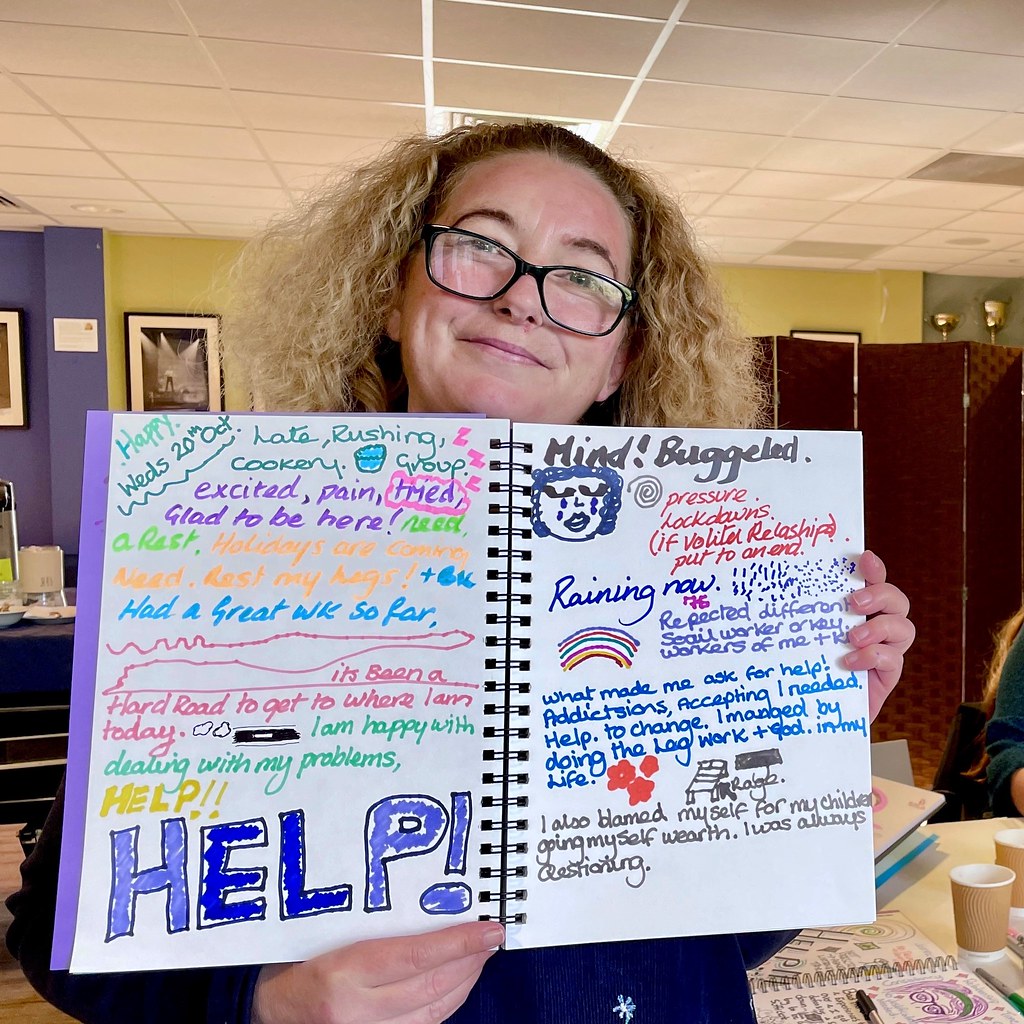Background
Professor Louise Brown is a social worker, and has a background in child protection practice. Her research focuses on supporting the scaling up, adaptation and implementation of innovative interventions in social care as they transfer between countries.
Engagement Type - Listening, Working Together
public group - parents who use family support services in BANES
Engagement Method - Journalling
Themes - Creative Methods
Project Team
Bath and North East Somerset Council (BANES)
Facts and Figures
Professor Louise Brown received £5000 from the Public Engagement Unit as part of the Engage Grants - Innovate Fund.
Overview
The Principal Social Worker from Bath and North East Somerset Council (BANES) approached me because they were developing their family support services, and wanted to use co-design principles. They wondered if I could assist with seeking the direct feedback and experiences of local people who had used their services.
Inspired by a project they had seen in Camden, they wanted to use creative arts to facilitate the engagement with service-users. We applied for a small grant from the Public Engagement Unit to fund this participation and were awarded £5,000.
It was a small budget, and also a short time-scale of 6 months. BANES agreed that they would cover any costs that ran over, and that they would also do all of the work to identify, recruit, and pay participants.
Engagement Approach

We found an artist through the charity, Creativity Works, who had a lot of experience working on community projects, and we agreed she would use journalling as a method of gathering information with the participants.
We had weekly briefing meetings with the artist, so that she knew exactly what we were looking for.
Choosing a venue for the workshops took some time. It needed to be somewhere comfortable, and also private enough for the types of conversations we would be having. BANES recruited a small group of 6 parents to take part. They also organised transport for each participant, and paid them for their time.
The group met weekly for 5 weeks. The artist took them through the aims of the project, and then they were each provided with their own journal in which they could draw, write, and create art about their experiences. They came up with various themes which we picked up on and they explored further. In this way, they determined the content and the findings of the project.
Outcomes
It was important to me that the same level of participation continued through the dissemination process. In the final two sessions, we had the audio-visual team from the University make a film with the participants that we could use as an output for dissemination. The participants were excited to submit this to the British Journal of Social Work.
BANES agreed that they would include the participants in any events or training that would result from these workshops. We have a meeting coming up with the Chair of the Council, and the Director of Children’s Services at which we will talk about the findings of the project, show the film and images.
How participatory methods benefited the research
The methods we chose really made a difference to the quality, depth, and range of data that we were able to collect in such a short space of time. We wouldn’t have been able to gather such in-depth information through other methods – like surveys or focus groups.
How the sessions benefitted the participants
The participants expressed their sadness in the film that the sessions were coming to an end, they would have liked them to continue for longer. One parent said “These sessions have been the best therapeutic intervention I have ever had”, and another talked about how important it was to feel respected by their social worker, and to see that they were open to change and constructive criticism.
Evaluation
Ideally, with a better funded, longer-term project, the participation levels would have been higher. We would have brought the service-users together to form a steering group, and have them advise on the project design, but we didn’t have the time to do that.
For this project, the process was determined before the participants were involved, but we used participatory creative methods for the data collection, and involved the service-users in the dissemination.
Top Tips
Don’t be put off by the thought of how much extra time and work it could be. Sometimes participation can be more work, but this project was actually more time-efficient than a traditional research project would have been. Working in partnership, and using creative outputs for dissemination, definitely saved us time. The quality of the data was also far superior to what we could have collected from any other method I could have used.